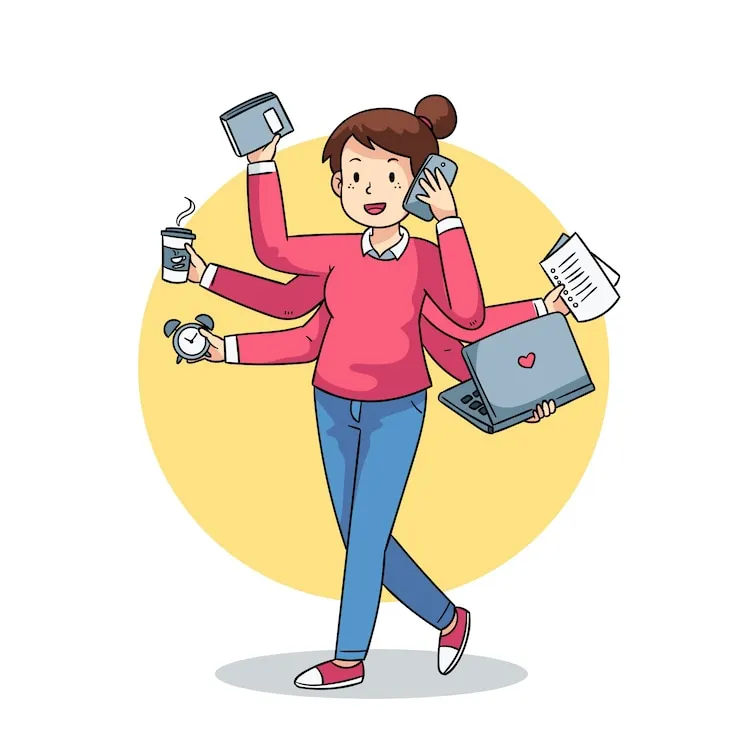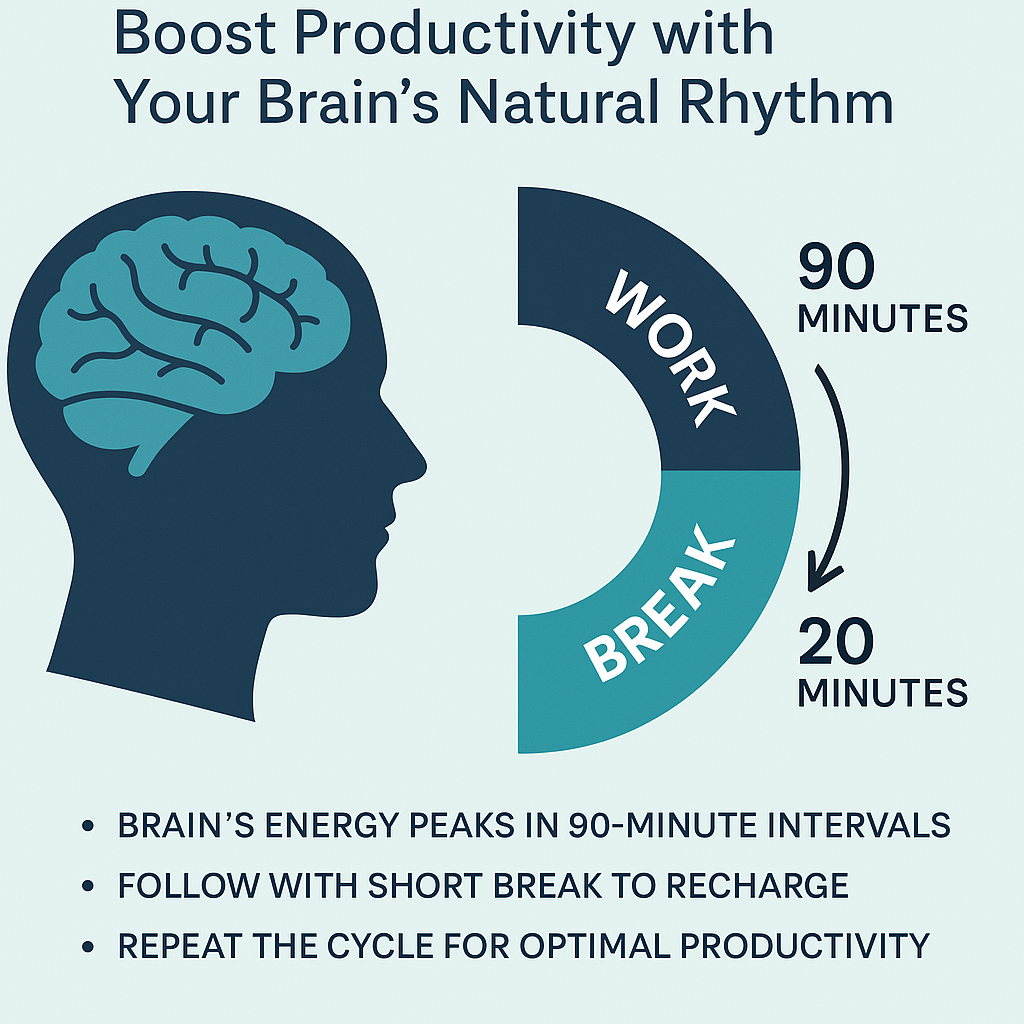✏️ Introduction
We’ve all tried it — texting while studying, watching YouTube while writing a report, or switching tabs every few minutes thinking we’re getting more done. But can you actually multitask effectively? Or is it just a myth we’ve convinced ourselves is true? At MindFactual, we break down the science behind multitasking, productivity, and what your brain is really doing when you juggle tasks.
🧩 What Is Multitasking, Really?
Multitasking is the act of performing more than one task at the same time. But here’s the catch — research shows the brain doesn’t actually perform tasks simultaneously. Instead, it rapidly switches between tasks, a phenomenon called task-switching.
🧠 According to neuroscientist Earl Miller at MIT, “Our brains are not wired to multitask well. When people think they’re multitasking, they’re actually just switching from one task to another rapidly — and this comes at a cognitive cost.”
This rapid switching makes it feel like you’re doing multiple things at once, but in reality, your brain is juggling focus, context, and memory between tasks — all of which use up valuable mental energy.
🔍 The Science Behind Multitasking
When you multitask, your brain engages the prefrontal cortex, responsible for executive functions like decision-making and attention control. Studies show this part of the brain can only fully focus on one demanding task at a time.
Brain imaging research reveals that switching tasks frequently triggers a “switch cost,” a brief pause in mental performance as your brain disengages from one task and reorients to another. These delays accumulate and reduce overall efficiency.
A study published in the Journal of Experimental Psychology found that participants who multitasked heavily performed worse on tests involving memory and attention compared to those who focused on one task at a time. The frequent switching overloads working memory, causing lapses and errors.
Interestingly, multitasking also impacts dopamine production, the neurotransmitter linked to pleasure and motivation. Constantly switching between tasks can create a feedback loop, releasing dopamine and giving a temporary hit of satisfaction — which explains why some people find multitasking addictive, even though it harms productivity.
🤔 Multitasking Myths Debunked
Myth 1: Multitasking makes you more productive.
In reality, multitasking usually slows you down. Research shows people who multitask take longer to complete tasks and make more errors, leading to lower quality work.
Myth 2: Some people are natural multitaskers.
While some individuals might be better at switching between tasks quickly, no one can genuinely process multiple complex tasks simultaneously. Studies, including one from Stanford University, found that heavy multitaskers are actually worse at filtering distractions and maintaining focus.
Myth 3: Multitasking saves time.
Switching between tasks can cost up to 40% of your productive time due to mental refocusing and correction of mistakes.
💡 How Multitasking Affects Your Brain and Productivity
- Decreased Focus: Constantly switching tasks fragments your attention, making it harder to concentrate deeply.
- Impaired Memory: The brain struggles to retain and recall information when overloaded with multiple stimuli.
- Increased Stress: Task-switching increases cortisol levels, which leads to feelings of stress and mental fatigue.
- Lowered Creativity: Deep, uninterrupted thinking is essential for creative problem-solving — something multitasking interrupts.
🏆 Productivity and Multitasking: What Actually Works
If multitasking is detrimental, what should you do to boost your productivity? Here are science-backed strategies:
- Single-Tasking: Prioritize one task at a time to maximize mental resources and improve work quality.
- Time Blocking: Schedule dedicated time slots for specific activities, minimizing interruptions and distractions.
- Pomodoro Technique: Work in focused 25-minute intervals followed by 5-minute breaks. This approach balances sustained focus with recovery, keeping your brain fresh.
- Digital Detox: Turn off unnecessary notifications and limit social media during work to avoid distractions.
- Prioritize Tasks: Use methods like the Eisenhower Matrix to focus on urgent and important tasks first, preserving your cognitive energy for high-impact work.
📚 Multitasking in the Digital Age: A Double-Edged Sword
Modern technology makes multitasking more tempting than ever — smartphones, laptops, and multiple tabs encourage constant switching. Yet, this digital multitasking has been linked to reduced academic performance and increased error rates in professional settings.
On the flip side, some forms of multitasking with low cognitive demand (like listening to music while exercising) can be beneficial or neutral, depending on the activity.
Understanding when multitasking harms versus helps your productivity is key to managing your time effectively.
📈 The Takeaway: Can You Actually Multitask?
The science is clear — while your brain is incredibly powerful, it’s not designed for true multitasking. What feels like multitasking is actually a rapid and inefficient switching between tasks, which reduces productivity and increases errors.
By understanding the neuroscience behind multitasking myths and adopting focused work strategies, you can optimize your brain’s potential and truly boost your productivity.
🧠 Bonus: Brain Hacks to Improve Focus
- Practice Mindfulness: Regular meditation strengthens your brain’s ability to focus and resist distractions.
- Exercise Regularly: Physical activity improves overall brain function, including attention and memory.
- Get Adequate Sleep: Sleep is crucial for cognitive performance and mental clarity.
- Stay Hydrated: Even mild dehydration can impair concentration.
MindFactual is your go-to source for science-backed study tips and productivity hacks. Ready to stop the multitasking myth and work smarter? Start by focusing on one task at a time and watch your efficiency soar.



